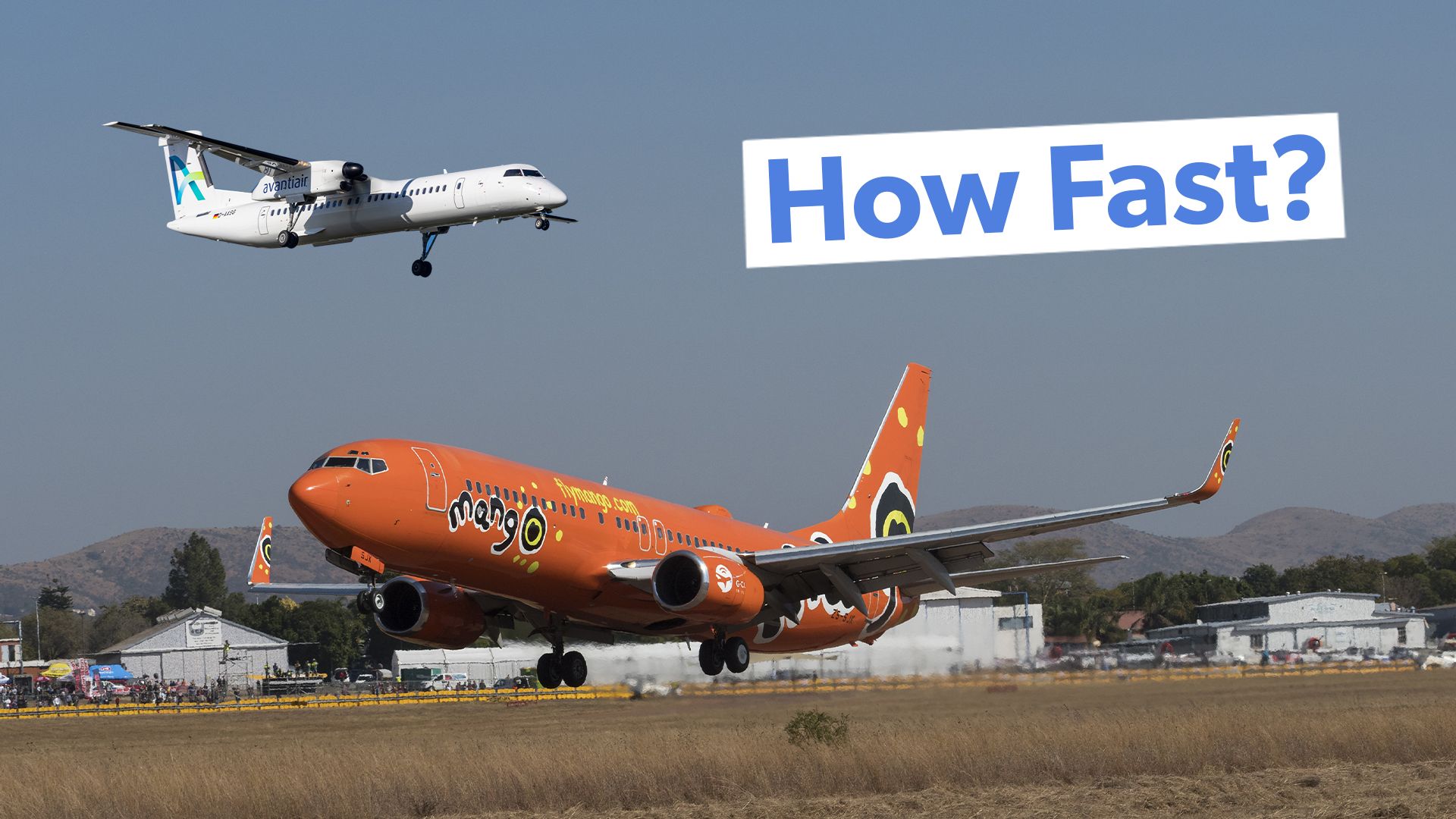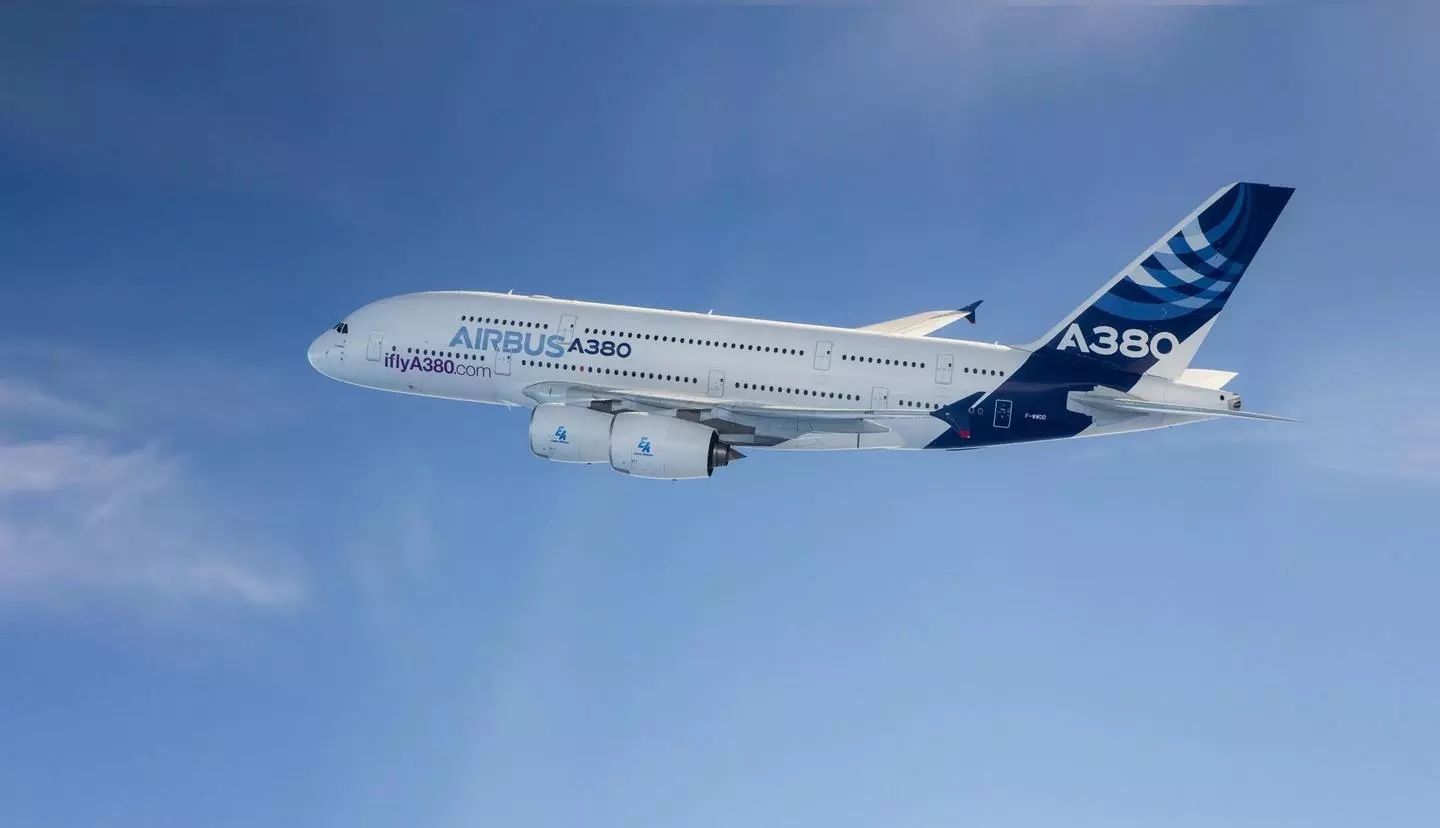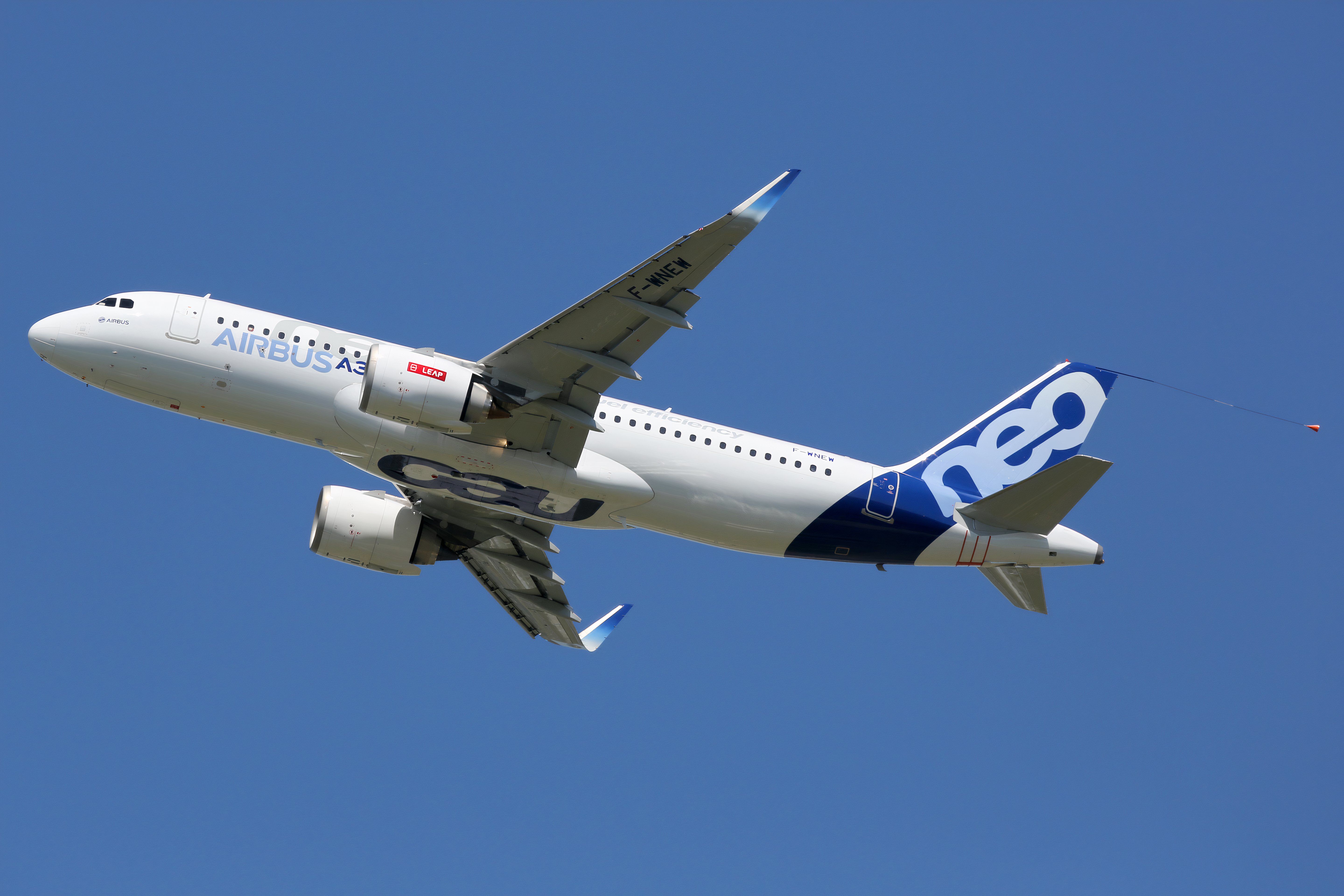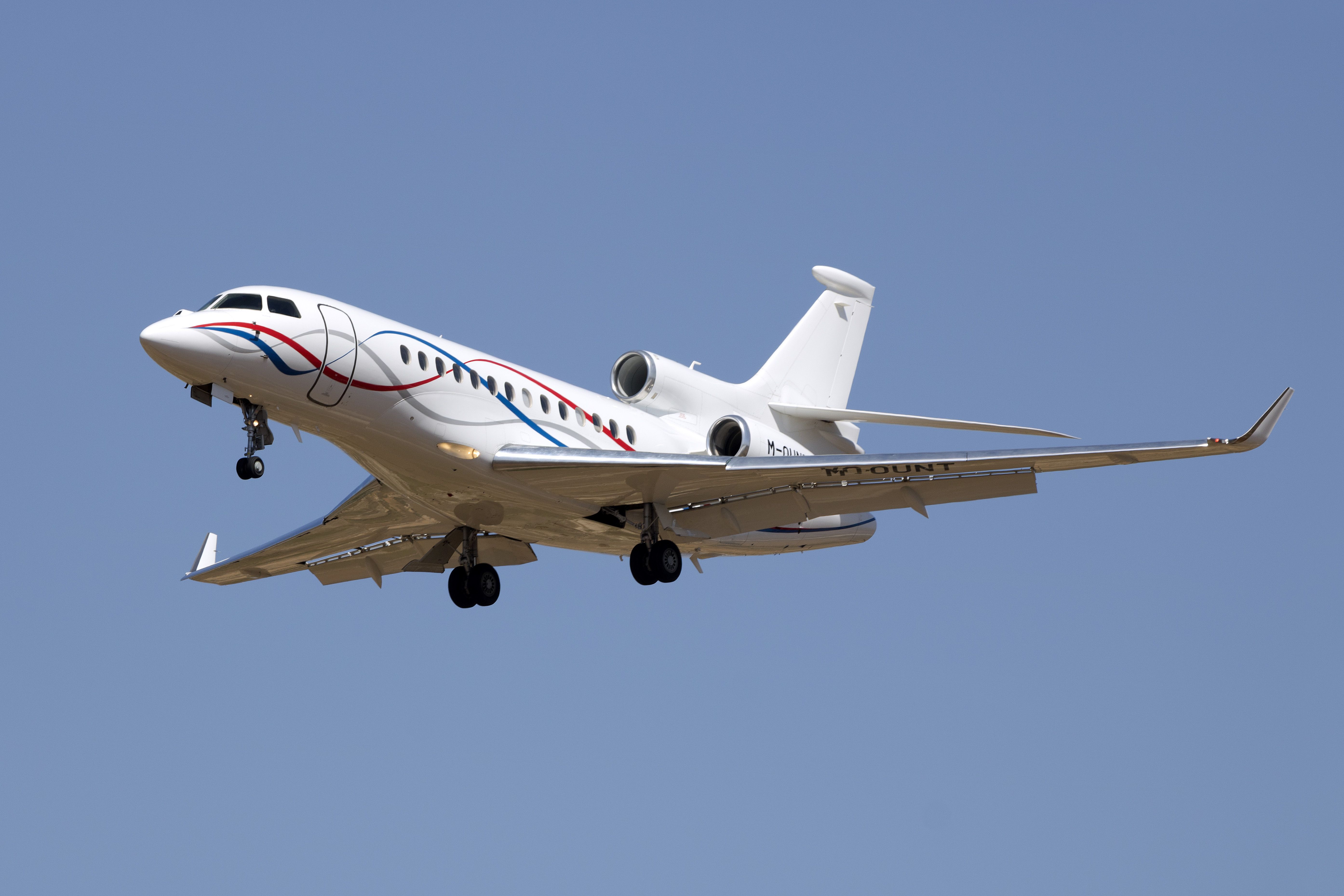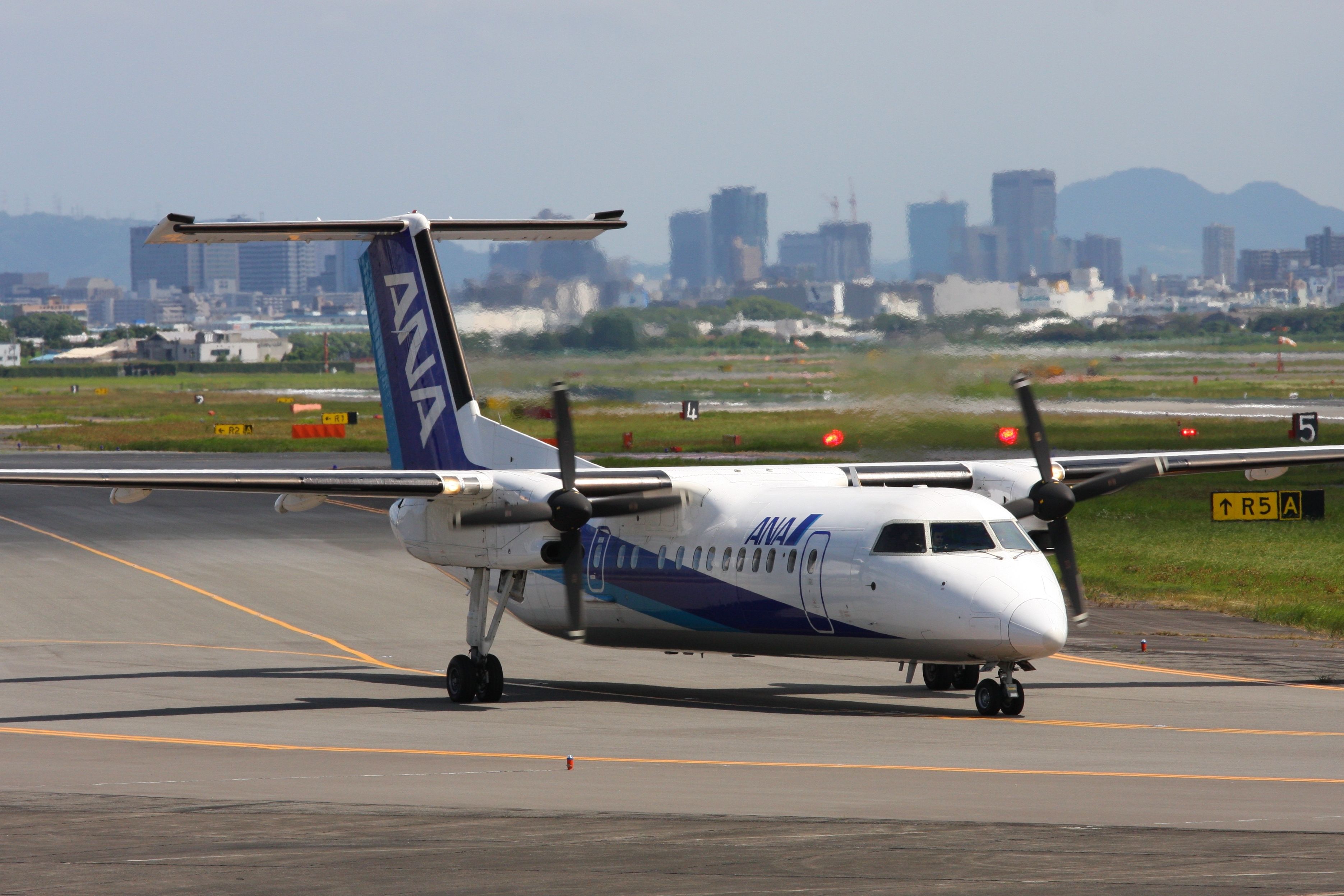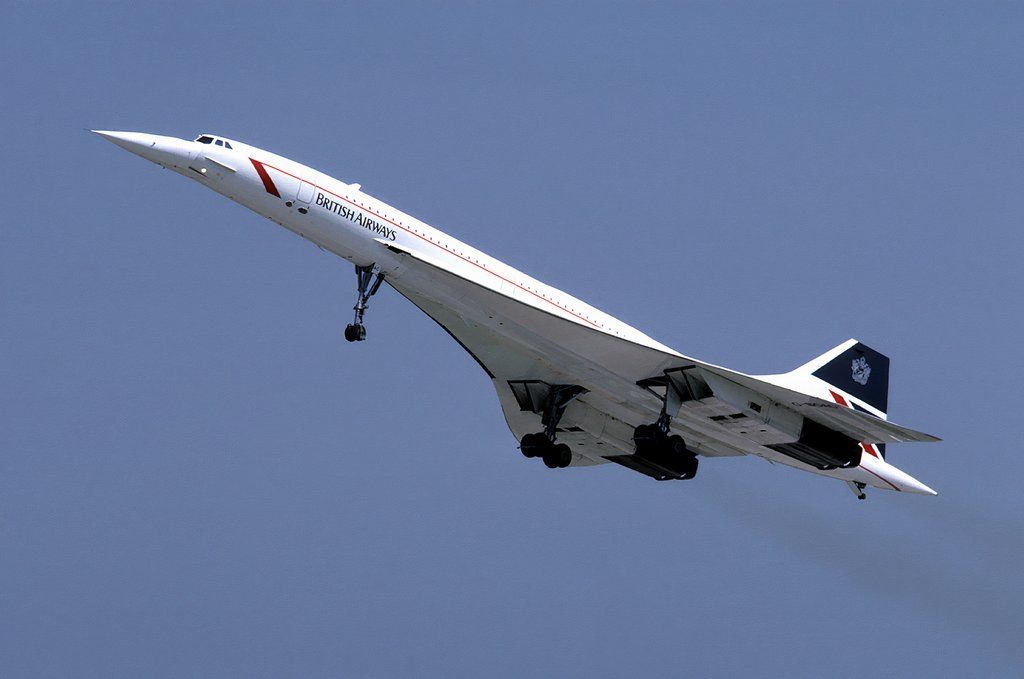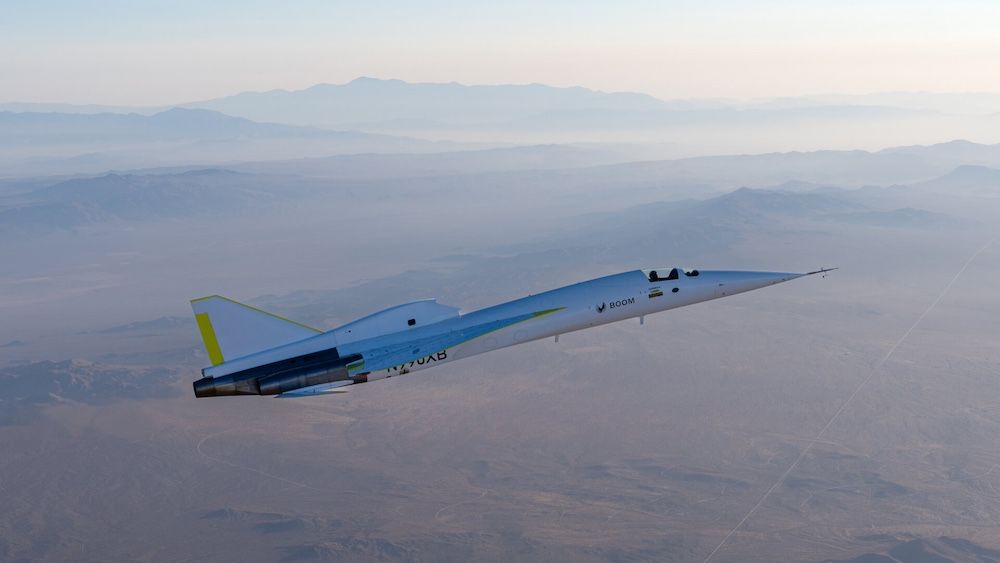How fast do commercial aircraft fly
? Unlike fighter jets, commercial aircraft
are built for safety and commercial viability. The cost of operating supersonic jet
aircraft is generally prohibitive (especially as overland routes are typically banned), meaning that the famous Concorde remains the only example of a successful supersonic passenger flight. Commercial jet-powered aircraft all fly at similar speeds—between 550 and 600 mph or Mach 0.79 to Mach 0.855, with narrowbodies flying a little slower than widebodies.
How fast jet-powered commercial aircraft fly
Today’s Boeing, Airbus, and jet-powered Embraer aircraft all have cruising speeds within the range of Mach 0.79 to Mach 0.855. Widebody aircraft have cruising speeds a little faster than their narrowbody counterparts (around Mach 0.85 vs. Mach 0.78 for narrowbodies). The midsized Boeing 757 is optimized for a cruising speed of Mach 0.8.
Photo: Airbus
|
Select Jet-powered Aircraft: |
Cruise Mach (per Thrust Flight): |
Knots: |
MPH |
|---|---|---|---|
|
Boeing 737 MAX |
Mach 0.79 |
453 kts |
521 mph |
|
Airbus A320neo |
Mach 0.78 |
450 kts |
518 mph |
|
Boeing 747-8 |
Mach 0.855 |
490 kts |
564 mph |
|
Boeing 787 Dreamliner |
Mach 0.85 |
488 kts |
562 mph |
|
Airbus A380 |
Mach 0.85 |
488 kts |
562 mph |
|
Embraer EMB-145 |
Mach 0.78 |
450 kts |
518 mph |
While a commercial aircraft’s normal cruising speed is not the same as its maximum speed, it’s not too far off. The normal cruising speed is typically around 80-90% of its maximum speed. These aircraft’s typical speeds during takeoff are typically between 160 and 180 mph.
No commercial passenger aircraft currently in service are designed to break the sound barrier – so that serves as a hard upper-limit to their speeds.
Photo: Markus Mainka | Shutterstock
Much like the Boeing 737 Max
and the Embraer EMB-145the maximum Mach operating speed for the Airbus A320neo
is Mach 0.82 (according to Airbus). The A320neo’s cruise speed is Mach 0.78 or 515 mph.
Business jets cruising speeds
Business jets can also have similar cruising speeds as widebody commercial aircraft. For example, the Gulfstream G600 has a cruising speed of 561-594 mph or Mach 0.85 to Mach 0.90. Another popular business jet – the Dassault Falcon 2000 – has a cruising speed of around Mach 0.80, while the Bombardier Challenger 600 has a cruise speed of Mach 0.80 and maxes out at Mach 0.85.
Photo: InsectWorld | Shutterstock
Select business jets’ cruise speed:
- Gulfstream G600: Mach 0.85-0.90
- Dassault Falcon 2000: Mach 0.80
- Bombardier Challenger 600: Mach 0.80-0.85
Like commercial passenger airliners, all business jets are currently only designed for subsonic flight, and none can exceed the sound barrier (767 mph at sea level).
How fast turboprop commercial aircraft fly
Turboprop aircraft fly much slower than their jet-powered counterparts – they typically fly in the 330 mph ballpark. For example, the ATR-72-600 has a max cruise speed (of 316 mph or around Mach 0.42). Embraer’s EMB 120 Brasilia (a twin-turboprop 30 passenger commuter airliner) has a cruise speed of 343 mph.
Photo: yanchi1984 | Shutterstock
The De Havilland Canada Dash 8’s cruising speeds depend on the type. The Q100, Q200, and Q300 have high speed cruise of 310 to 333 mph. The Q400 boasts a high-speed cruise of 350 to 410 mph.
|
Select turboprop aircraft: |
cruising speed |
|---|---|
|
ATR-72-600 |
316 mph |
|
De Havilland Dash 8 Q300 |
333 mph |
|
De Havilland Dash 8 Q400 |
350-410 mph |
|
Embraer EMB120 Brasilia |
343 mph |
Supersonic commercial jets
Only two supersonic commercial jets have ever become operational – the famous Concorde and the Soviet Tupolev Tu-144 (aka Concordski). The Concorde SST had a supercruising speed of Mach 2.04 (1,350 mph) and continues to hold the distinction of being the world’s only successful supersonic commercial jet.
The
Tu-144 flew only a limited number of passenger-carrying flights before it was withdrawn
. It was mostly built for propaganda purposes and was never commercially viable. However, the Tu-144’s cruise speed was impressive, ranging from 1,315 mph to 1,430 mph (or Mach 2.0 to Mach 2.2), depending on the model.
|
Supersonic commercial jets: |
Cruising speed: |
Status: |
|---|---|---|
|
Concorde SST: |
Mach 2.04 |
Retired |
|
Tupolev Tu-144: |
Mach 2.0-2.2 |
Retired/failed |
|
Lockheed L-2000: |
Mach 3 |
Cancelled |
|
Boeing 2707-100: |
Mach 2.7 |
Cancelled |
|
Boom Overture: |
Mach 1.7 |
In development |
|
Spike S-512 |
Mach 1.6 |
In development |
Concorde
and Tupolev were not the only supersonic commercial jets designed at the time. Lockheed designed the Lockheed L-2000 with a cruise speed of around Mach 3, while Boeing’s Boeing 2707-100 had a cruise speed of Mach 2.7. However, these jets never got off the drawing board and were never built (
although a mockup of the Boeing 2707-100 was built
).
“I’ve long believed that Overture is the rightful successor to Concorde. After experiencing Overture’s flight deck, which is incredibly well designed and delightful to fly, my excitement and enthusiasm for this aircraft has only intensified.” Mike Bannister former Chief Concorde Pilot for British Airways
Photo: Boom Supersonic
Perhaps the most promising supersonic commercial passenger airliner in development today is the Boom Overture
. It is being designed with a cruise speed of Mach 1.7 (Boom had originally planned to produce it with a cruise speed of Mach 2.2, but this was abandoned). Another proposed supersonic jet is the Spike S-512 business jet (designed by Spike Aerospace), which has a cruising speed of around Mach 1.6.

